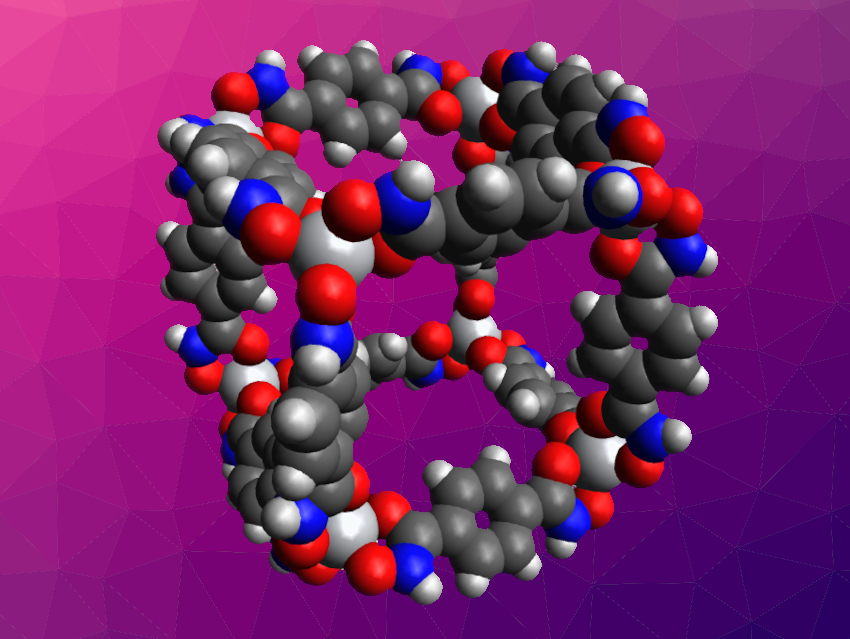Metal–organic polyhedra (MOPs) consist of metal centers and organic linkers—similar to metal–organic frameworks (MOFs), but MOPs are molecular in nature instead of forming extended porous solids. MOPs are less well explored than MOFs. They could be useful, e.g., when integrated into membranes. However, it is challenging to prepare MOPs that remain stable and porous after guest molecules are removed.
Carlos Martí-Gastaldo, Universitat de València, Spain, and colleagues have prepared the first titanium–organic polyhedra displaying permanent porosity (pictured). The team was inspired by a porous titanium–organic framework (MUV-11), which contains benzene-1,4-dihydroxamic acid (p-H4bdha) linkers. The MOP, called cMUV-11 (cMUV = cage-type Material of Universidad de València) was synthesized from titanium(IV) isopropoxide and p-H4bdha, using N,N-dimethylformamide (DMF) as the solvent and benzoic acid as a modulator.
The resulting product has a structure based on distorted [Ti8(p-H2bdha)8(p-bdha)4] cubes, i.e., one-third of the linker molecules are deprotonated. It has a high porosity with a Brunauer–Emmett–Teller (BET) surface area of 1020 m2 g–1. The linkers can be functionalized to tailor the properties of the MOP.
- Permanent Porosity in Hydroxamate Titanium–Organic Polyhedra,
Belén Lerma-Berlanga, Javier Castells-Gil, Carolina R. Ganivet, Neyvis Almora-Barrios, Javier González-Platas, Oscar Fabelo, Natalia M. Padial, Carlos Martí-Gastaldo,
J. Am. Chem. Soc. 2021.
https://doi.org/10.1021/jacs.1c09278




